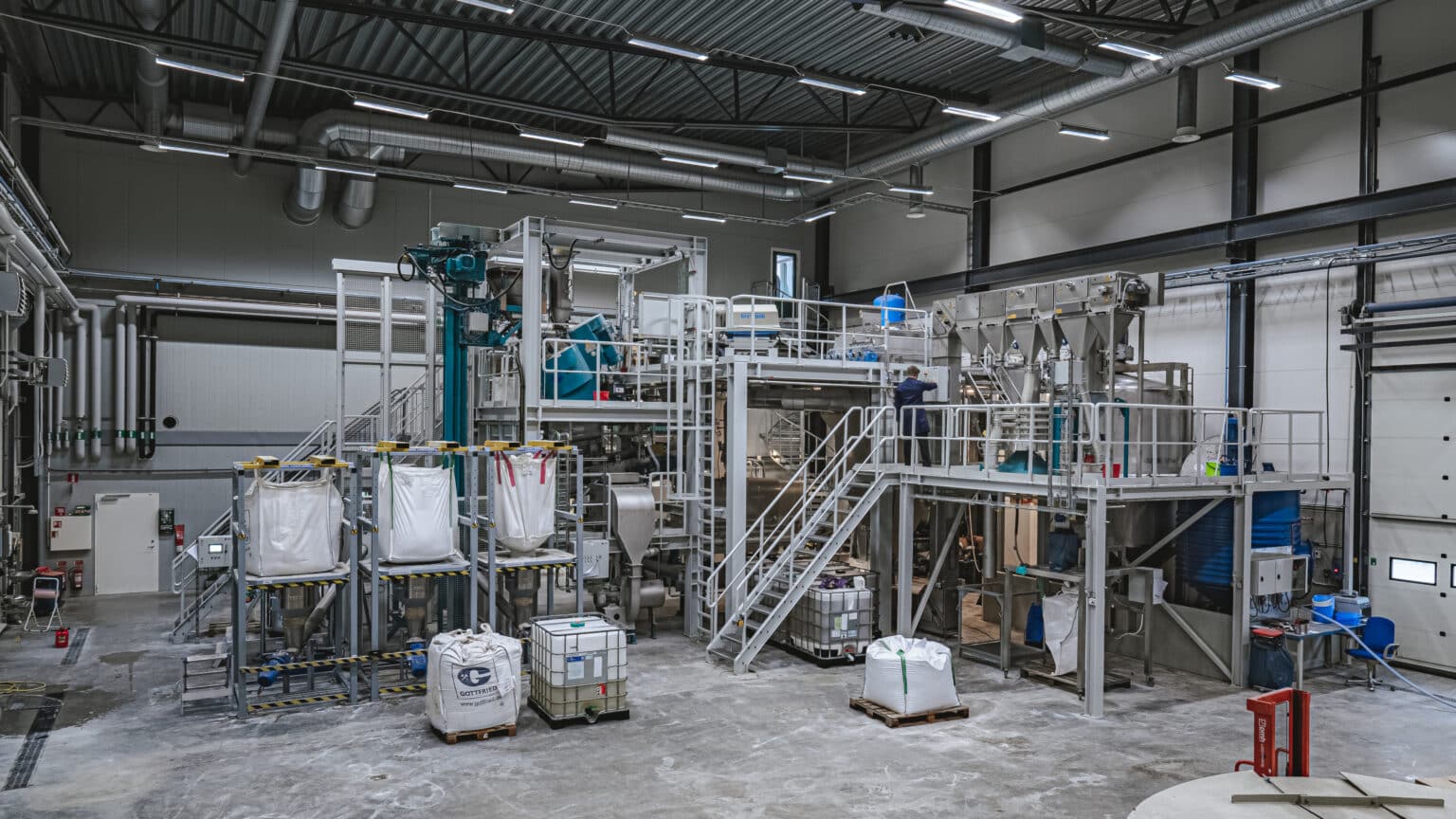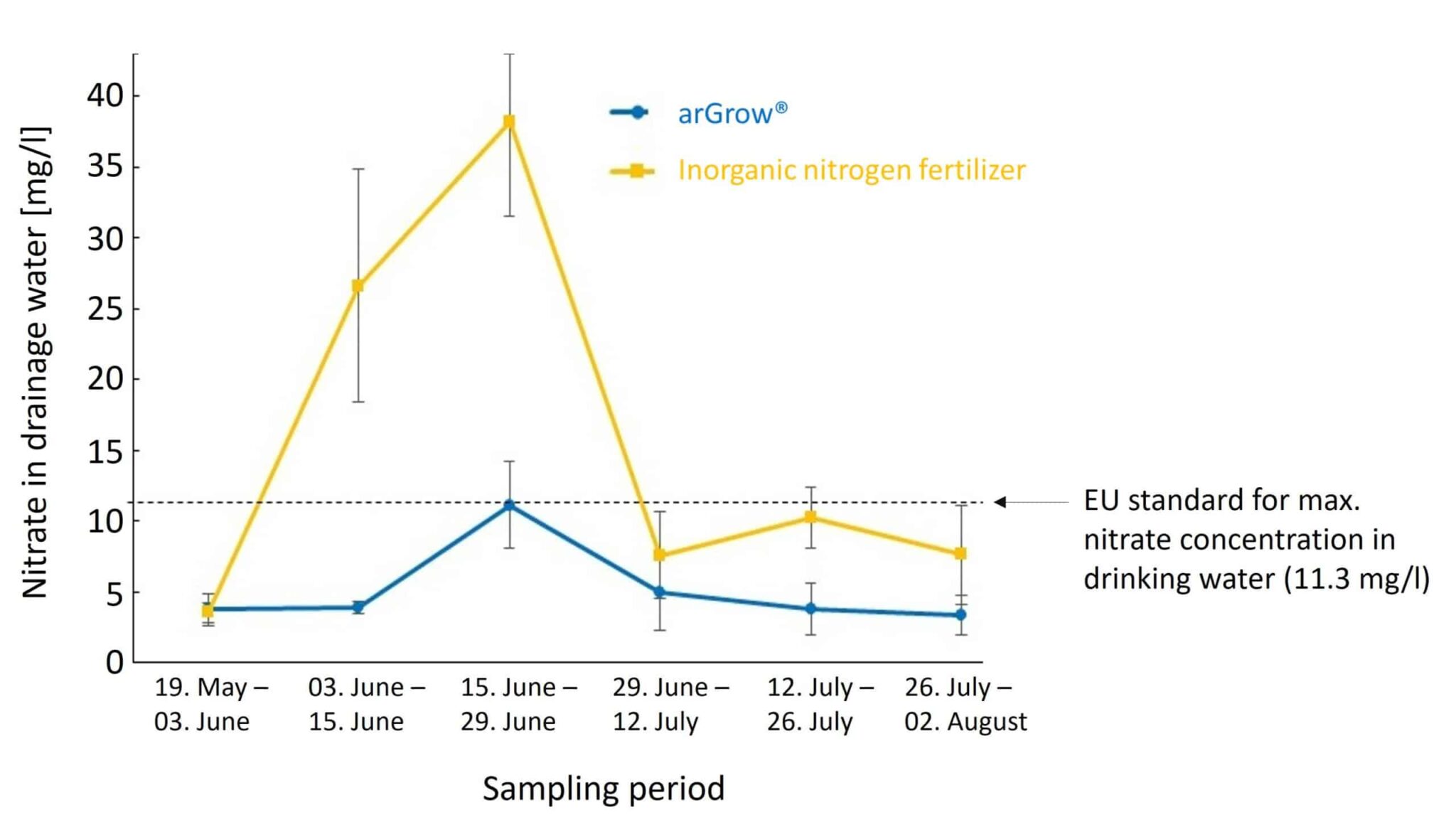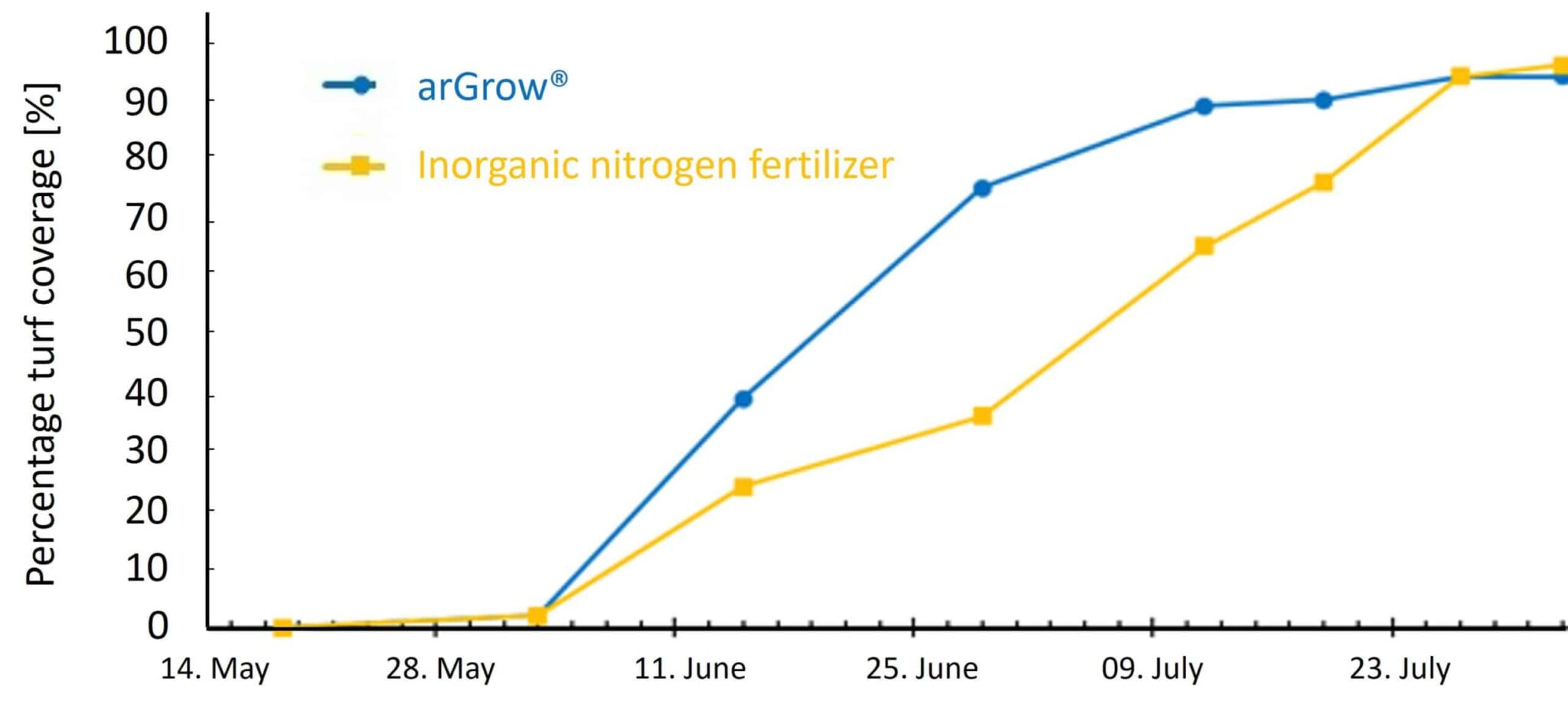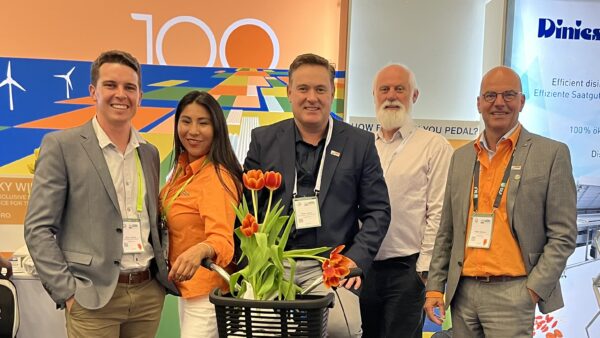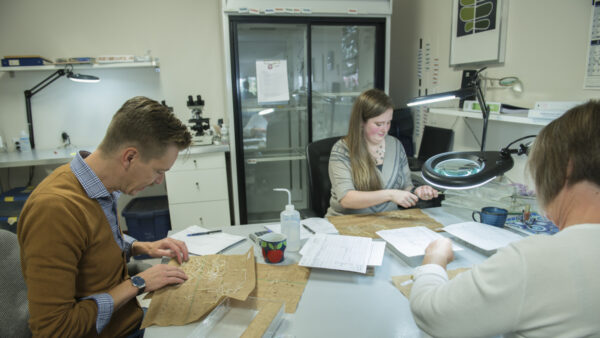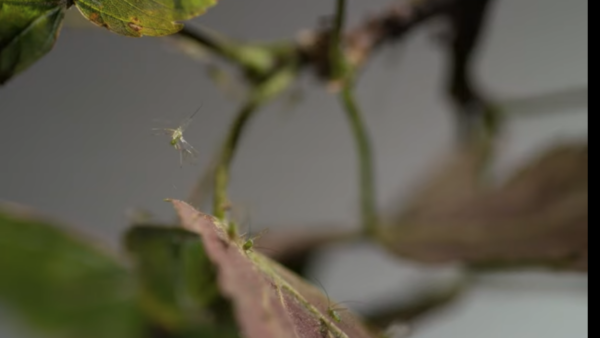This Swedish invention unlocks new methods for addressing the Farm to Fork goals.
Large inputs of inorganic nitrogen are well known to have several negative impacts on crop production and the environment: it stimulates shoot growth at the expense of root growth, making crops more susceptible to drought andinorganic nitrogen leaching is a major problem, not only in regular agricultural fields, but also in pots and garden beds. This problem is recognized as such in the European Green Deal’s Farm to Fork Strategy, which aims for a reduction of nutrient losses by at least 50 per cent without deterioration in soil fertility. The Farm to Fork Strategy aims to reduce the use of fertilisers in European farm fields by at least 20 per cent by 2030. At the same time, it is well known that a high productivity in cropping systems requires abundant supply of nitrogen. The Swedish company Arevo may have found a solution to mitigate these challenges.
Arevo has come up with a novel way to encourage crop root growth and, consequently increase plants’ nitrogen uptake. European Seed sat down with the company’s team for agricultural solutions, Prof. Torgny Näsholm, CEO Niklas Åström and Dr. Regina Gratz, as well as Prof. Susanne Schmidt, University of Queensland Australia, to hear their insights into this sustainable innovation, and to learn how it may contribute to advance the objectives of the Farm to Fork initiative.
European Seed (ES): Torgny, you founded Arevo. Can tell us a bit more about your company?
Torgny Näsholm (TN): We are a cutting-edge company based in Umeå, Northern Sweden, dedicated to producing environmentally friendly biostimulants for plants. The unique products are deeply rooted in academic research, offering sustainable solutions for plant production.

The company emerged as a spin-off from Swedish forest biotech science, with its foundation established in academic research concerning the significance of organic nitrogen in tree nutrition. The research revealed the remarkable ability of trees in taking up amino acids, particularly arginine. A significant discovery was that the supply of arginine to plants vastly improves the growth and development of their root systems. As a result, we have placed a strong emphasis on arginine in both patents and product development due to its unique and beneficial impact on the essential process of plant establishment in cropping systems. Currently our product portfolio, named arGrow®, consists of both liquid and granular products.
Following on the developments in forestry, we discovered that the biology and biochemistry of arginine and the effects it brings to plants is a general phenomenon, common to all crops tested. This opens possibilities for our technology to contribute to more sustainable cultivation practices and more resilient agricultural crops in a wider perspective.
ES: How did you discover this positive response of plants to arginine?
TN: The initial discovery on plant uptake of organic nitrogen was published in the journal Nature more than 20 years ago. We showed that forest plants, not only trees but also grasses and shrubs, are very efficient when it comes to uptake of amino acids from soils. I realized that there should be a potential for the development of new types of plant nutrition. The question was just which of the many amino acids available (20 proteinogenic amino acids, many more non-protein amino acids) would be most suitable? We realized already at the beginning that a combination of high soil retention combined with high rates of acquisition of plant roots would be the ideal characteristic for delivering nitrogen to plants. The combination seemed unlikely but tests on tree seedlings surprisingly showed that arginine displays both characteristics. We also made the discovery that plants cultivated on arginine exhibited a much more well-developed root system compared to plants cultivated on inorganic nitrogen and, in the case of trees, a much higher degree of mycorrhizal roots. This showed that organic nitrogen in general, and arginine in particular, was not only another source of nitrogen for plants but also that plant performance was drastically improved, in particular root development.
“Editor’s Note: Arginine has the highest nitrogen to carbon ratio of any of the 20 main amino acids so can be a beneficial source of organic nitrogen for plants. Of all amino acids, arginine is the strongest cation which contributes to the very low losses of nitrogen when this amino acid is used in plant cultivation.”
ES: What inspired you and your team to take your scientific results to the next level by founding a company that produces plant biostimulants?
TN: I was contacted by a prospective forestry customer that was forced to reduce their nitrogen leakage from plant nurseries. I realized that I could replace the mineral nitrogen component in their fertilizers by an organic-derived nitrogen form: arginine. The leaching of nitrate from mineral fertilizers contributes to severe environmental effects such as polluting waterbodies. Using arginine as a nitrogen source for plant cultivation maintains plant growth, development, and productivity, while minimizing leaching and pollution. The well-known negative effects of high rates of inorganic nitrogen supply on root development was also a major interest and when seeing how arginine promoted a fundamentally different and much more developed root system, I understood that this technology not only could reduce nitrogen leakage but could also contribute to the development of more resilient cropping systems.
ES: Regina, can you explain how this ground-breaking innovation works in more detail?

Regina Gratz (RG): In general, arginine is absorbed faster by plant roots than other nitrogenous substances. Because it is positively charged in the pH range of soils, arginine also binds strongly to soil particles. The combination of efficient root uptake and strong binding to soil particles leads to very low leakage of nitrogen compared to other forms of plant nitrogen sources used today. And as Torgny already mentioned, arginine stimulates growth and development of roots and root-associated microbes. This makes plants more stress-resistant with robust and well-developed root systems, providing increased survival, high growth, and simplified cultivation. Our technology is based on the specific properties of this amino acid, distinguishing it from other amino acids and from other types of plant nutrients and plant biostimulants. The company has developed a technology by which arginine is released over extended periods of time to enable exact dosing for germinating seeds and for stimulating beneficial microbes such as nitrogen-fixing bacteria and mycorrhizal fungi. At the core of the technology is the formulation of arginine into arginine monophosphate crystals. This formulation brings controlled release properties which makes the product perfectly suited for seed applications as well as precision placements close to seeds. The controlled release properties of arginine phosphate also replace the need for technology involving membranes.
ES : Niklas, can you share some insights into your manufacturing processes? How do they align with your commitment to environmental responsibility?
Niklas Åström (NA): Using our products in reforestation has helped increase plant survivability, productivity, and to reduce environmental impact. The increased demand for our products motivated us to invest in a new, custom-tailored production facility in Northern Sweden in 2022, allowing us to manufacture our product line inhouse. The facility is small but extremely efficient compared to production of conventional fertilizers which contributes to a very low carbon footprint.
The manufacturing processes are designed to minimize waste by re-using our own waste streams in subsequent production runs.
ES: Regina, with respect to the Farm to Fork Strategy, can you specify in detail which goals can be addressed by using your product?
RG: The Farm to Fork Strategy seeks to reduce fertilizer use by at least 20 per cent, but perhaps more importantly, to reduce nutrient losses by at least 50 per cent, while ensuring no deterioration in soil fertility. Because our product is so powerful and efficient, only 80g nitrogen per hectare as a one-time application during planting of forest seedlings is needed. This shows how a minute amount of product results in a strong positive effect on seedling survival and growth, which directly addresses the attempts to reduce nitrogen inputs in soils. A study of the effects on golf grass executed by the Norwegian Research Institute (NIBIO) displayed a significantly reduced nitrogen leakage into the environment.
NIBIO used our product in comparison to a standard inorganic nitrogen fertilizer to grow turf and recorded establishment of the grass and nitrate leaching rates. While the rate of grass cover was significantly enhanced with our product, the leakage was kept to a minimum, complying to the European standards, whereas conventional fertilizer use displayed about 3.5 times higher leaching levels. This is just one example of how our technology offers a novel tool for addressing the Farm to Fork goals, especially in the agricultural sector.
I’d like to mention that not only is the amounts of applied nutrients reduced, we believe that our innovation can also help reduce input of pesticides. To fight pests and diseases, plants need to produce defense compounds. For this, a significant amount of carbon is needed. Carbon, however, is also needed to make nitrogen derived from nitrates plant available. Converting nitrates to nitrogen competes with plant defense activities in times of need. Theoretical calculations and practical experiments have shown that nitrogen sources such as amino acids, in particular arginine, provide small plants with a carbon bonus. This is because amino acids contain both plant available nitrogen and carbon, hence, the carbon costs associated with the uptake and utilization of amino acid derived nitrogen is significantly reduced. This carbon bonus thereby enables plants to better combine a high growth rate with investments in various defense compounds. Consequently, this would lead to a need for less pesticides: yet another important requirement in the Farm to Fork strategy.
In summary, the application of our product will lead to an improvement of the plant’s physiology and strengthen the plant, including an increase in its metabolic activity leading to a higher resilience against abiotic stress, pests, and diseases.
ES: Niklas, how do you ensure the quality and consistency of your biostimulants, and are there any certifications or validations you have obtained to substantiate their effectiveness?

NÅ: We maintain strict quality control measures throughout our manufacturing process. We are members of the European Biostimulant Industry Council (EBIC), and actively contribute to building up a uniform regulatory framework for biostimulants within Europe.
And of course, we are currently certifying our products according to EBIC standards. With growing interest in biostimulants and respective market growth, there will be an increased demand for sustainable solutions with validated effects.
We are prepared to fulfill these demands.
ES: Susanne, you tested this new innovation. What did you find?
Susanne Schmidt (SS): Arginine increased the water use efficiency of tropical tree seedlings in initial glasshouse-based research. This is important in our view because the survival of trees in restoration plantings will depend on how plants use water as it often is a limiting resource that determines the survival of tree seedlings. We have yet to understand the mechanisms, but all is pointing to benefits to a plant’s physiology1.
ES: Regina, how do you foresee the application of your products? You mentioned earlier the possibility for precision placement and seed applications. Can you elaborate a bit more on that?
RG: Yes! In forestry, our innovation is mainly used in granular form, placed under the seedling at planting. In this way, the biostimulant comes close to the target — the root — and a small dose per seedling is enough. We believe in precision dosing and providing the plant with nutrition in the establishment and initial growth phase to facilitate the establishment of a strong and functional root system directly from the beginning, serving the plant with the nutrients and water to maximize carbon uptake through photosynthesis.
For agriculture, a few granules can be placed in the soil just under the seed, thereby favouring the seed and not the weed. In this way, a significantly reduced application rate of inorganic fertilizers could be achieved.
Another solution within agriculture is via Seed Applied Technologies (SAT). We have produced seeds with arginine phosphate crystals in a seed coating. In this way, no additional application steps need to be performed during planting. So far, we have received promising results with our SAT seeds, with no records of penalties. This technology is not just of interest for agricultural crops such as soybeans or corn, but also for the home-grower. Seed coating of, for example, tomato, carrots, lettuce, or onion seeds is no problem.
ES: Niklas, what are your next steps?
NÅ: The company has gone through a big transformation from innovation, patenting, pilot production and commercialization to having our own production facility, meeting the needs from forestry in 2022 onwards. We are now looking to expand our international market and forestry customers in the Baltics, Germany, Austria, France, South America, the US and Canada are testing the product, with encouraging results.
We are also excited about exploring our technology for agricultural crops, where we currently are underway with greenhouse and field tests in several countries as well as development of a SAT platform. There are several new patents progressing and we are developing a new plant biostimulant formulation with novel release rate characteristics.
In forestry, we offer solutions and products directly to end-users. In the agricultural sector, we foresee more focus on B2B for SAT seeds, as well as licensing and supply. In this way, capabilities and resources are best managed throughout the value chain for the benefit of the farmers.
Footnote: Organic nitrogen improves the water use of tropical tree seedlings cultivated for restoration plantings (Krishnan et al., 2023), https://nph.onlinelibrary.wiley.com/doi/10.1002/ppp3.10363


